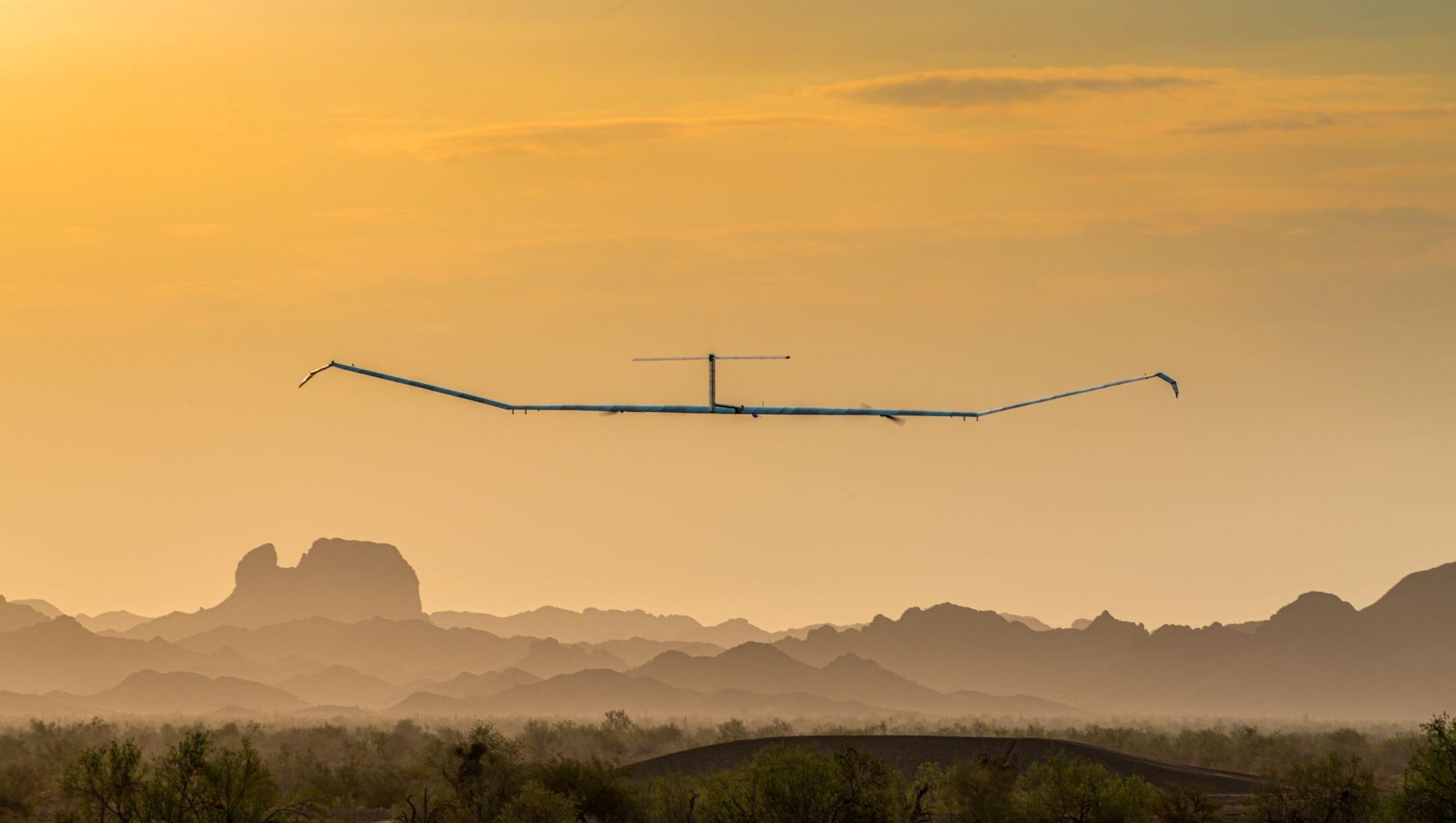Rekorden innehas fremdeles av en Cessna 172
Often, when we think of long-endurance flights, our first thoughts jump to military operations. Big planes with highly-trained crew will fly for long periods, using air-to-air refuelling to stay aloft for extended periods.
However, many of the longest duration flights have been undertaken as entirely civilian operations. The longest of all happened to be undertaken by that most humble of aircraft, the Cessna 172. From December 1958 to February 1959, Bob Timm and John Cook set out to make history. The duo remained aloft for a full 64 days, 22 hours and 19 minutes, setting a record that stands to this day.
(Red.)
Army’s ultra-endurance Zephyr drone comes down after ‘unexpected
termination’ over Arizona desert
After
setting endurance flight records, the slender UAV will now be grounded until
2023.
The Zephyr high-altitude drone (Airbus)
WASHINGTON — After loitering high in the sky for more than two
months straight, the US Army’s spindly, high-flying, ultra-endurance drone known
as the Zephyr has finally returned to earth — brought down by
what the Army called an “unexpected termination of [its] flight.”
The Army’s Assured Positioning, Navigation and Timing/Space
(APNT/Space) Cross-Functional Team was cagey in a press release Monday about
exactly what happened last week on the 64th day of flight for the 82-foot wide,
165-pound unmanned aircraft. But there are enough questions that any future
flight of the Zephyr has now been delayed until 2023.
“On August 18 around 2100 hours PDT, the prototype aircraft’s
flight campaign ended when the Zephyr 8 UAS encountered events that led to its
unexpected termination over [Yuma Proving Ground],” the release said. “These
events are under investigation. No injuries or risk to personnel or other
aircraft resulted from this incident. Further information will be released
following the investigation.” A follow-up request for additional details was
not returned by publication.
Michael Monteleone, director of the cross-functional team, said
in the statement that his team was “working hard to gather and analyze
important data following the unexpected termination of this flight.”
Though the experiment apparently ended poorly, Monteleone said
the Zephyr’s record-setting flight had provided “invaluable data and increased
knowledge of the endurance, efficiency, and station keeping abilities of
high-altitude UAS platforms.”
“That knowledge will allow us to continue to advance
requirements for reliable, modernized stratospheric capabilities to our
Soldiers,” he said.
The Airbus-made Zephyr originally took off in mid-June, part of the Army’s research into future high-altitude intelligence, surveillance and reconnaissance capabilities. Running on batteries and solar power, Monteleone previously said platforms like the Zephyr “have the potential to provide significant military capabilities and enhanced confidence as part of the Army’s diversified multi-layered architecture.”
As part of
the experiment, the Zephyr flew up to 60,000 feet into the stratosphere and
flew “over the southern portion of the United States, into the Gulf of Mexico,
and over South America,” today’s release said.
By late July the Zephyr had completed its mission, but there was
a problem: the Army said it couldn’t bring the Zephyr down until weather
conditions were “ideal.” So it left the Zephyr up there, loitering thousands of
feet over the Arizona military facility, until it met its fateful, if still
mysterious, end last week.
Still, the Army highlighted that the flight included a number of
firsts for the aircraft, including its first flight over water, the first
“direct downlink while outside of U.S. airspace” and the “longest duration (7
days) utilizing satellite communications” — including from a military base in
the UK. By the end, it had doubled the previous UAS endurance record and flew
“in excess of 30,000 nautical miles” (about 35,000 miles).

Both due to the amount of data gathered, and now the necessary
investigation into the Zephyr’s last moments, the Army said it was delaying
further flight demonstrations until 2023.







Ingen kommentarer:
Legg inn en kommentar
Merk: Bare medlemmer av denne bloggen kan legge inn en kommentar.